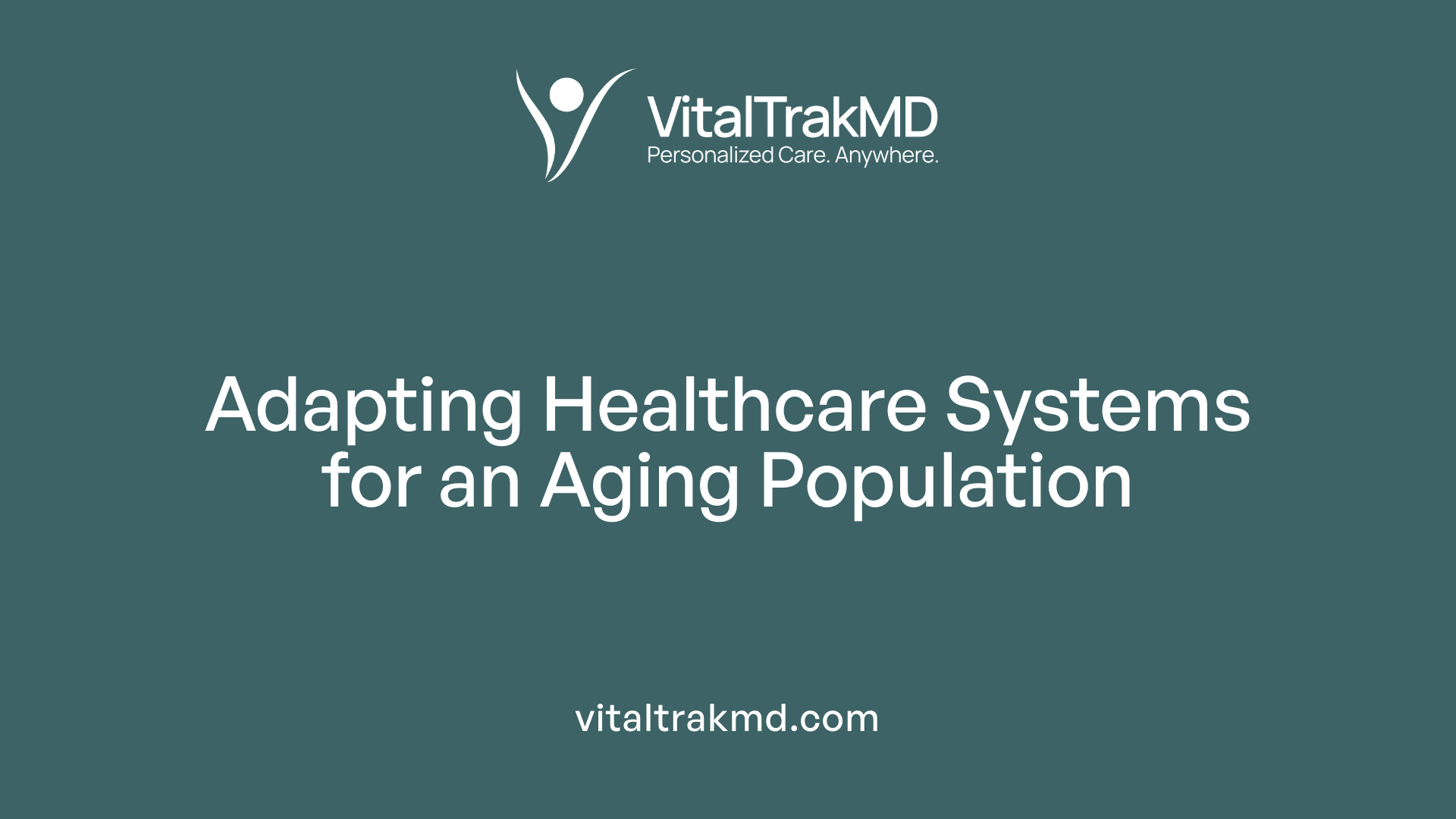Building Healthy Habits at Age 65 Using Hybrid Healthcare

The Growing Importance of Healthy Aging
As the U.S. population ages rapidly, with projections indicating that by 2030, more individuals will be over 65 than under 5, the focus on geriatric care and health promotion becomes increasingly critical. This demographic shift necessitates a comprehensive rethinking of healthcare delivery, emphasizing preventive care, health management, and the adoption of hybrid healthcare models to promote healthy aging and maintain independence among older adults.
Understanding the Urgency of Elder Care in the Modern Age

Demographic shifts and their impact on healthcare systems
By the year 2030, the United States is expected to see a significant demographic change: more people will be over 65 years old than younger than 5. This shift underscores the urgent need to reshape healthcare systems to accommodate the growing older population. As baby boomers age, the demand for elder-specific care, long-term supports, and public health strategies increases considerably.
This aging trend presents challenges, including a rise in chronic health conditions, functional impairments, and complex care needs. The healthcare infrastructure must adapt rapidly, integrating more geriatric expertise, innovative care models, and robust community support networks to meet these evolving demands.
The complexity of caring for a diverse older population
Caring for older adults involves navigating a heterogeneous population with varying medical, social, and psychological needs. Older adults do not represent a monolithic group; they differ widely in health status, socioeconomic background, cultural identity, and access to resources,
The COVID-19 pandemic accentuated these disparities, exposing gaps in preparedness and highlighting the necessity for flexible, inclusive approaches to elder care. The complexity extends to managing multiple chronic diseases simultaneously, addressing social determinants of health like housing and transportation, and supporting mental well-being.
The need for tailored care models for older adults
To improve health outcomes and quality of life, tailored care models are essential. Programs like CAPABLE and the Age-Friendly Health Systems initiative promote personalized, evidence-based practices focused on holistic well-being. These models emphasize the 4Ms framework — What Matters, Medication, Mentation, and Mobility — to offer comprehensive and respectful care aligned with older adults’ preferences.
Effective policies must foster collaboration across public health, healthcare, and social sectors to address social determinants, promote preventive measures, and ensure equitable access to quality care. Enhancing workforce capacity through training and advanced care models will also be vital.
| Aspect | Focus Area | Details |
|---|---|---|
| Demographics | Population Age Shift | More seniors than young children by 2030, creating increased demand for eldercare |
| Population Diversity | Heterogeneous Needs | Variability in health, socioeconomic status, and cultural backgrounds |
| Care Models | Personalized and Evidence-Based Care | Programs like CAPABLE and Age-Friendly Systems promote comprehensive, tailored services |
| Policy and Workforce | Integration and Training | Policies to bridge sectors, boost workforce training, and promote preventive care |
| Innovative Technologies | Digital and Telehealth Solutions | Use of telehealth, digital tools, and remote monitoring to improve care access and coordination |
| Addressing Social Factors | Social Determinants of Health | Focused on housing, food, transportation, social engagement to improve health outcomes |
As the United States navigates the demographic shift, embracing innovative, inclusive, and patient-centered approaches will be crucial in creating a sustainable, effective eldercare system for the future.
The Future of Geriatric Care and Policy Reform

How do healthcare policies and innovative service delivery models, like hybrid healthcare, impact health outcomes in older populations?
Innovative healthcare models such as hybrid healthcare—combining in-person and telehealth services—are reshaping geriatric care by making health services more accessible and flexible for older adults. During the COVID-19 pandemic, the adoption of telemedicine demonstrated a significant increase in engagement, especially among those with mobility challenges or living in remote areas. This approach reduces barriers to care, facilitating regular monitoring and management of chronic conditions, which are prevalent among seniors.
Additionally, hybrid models help address disparities across different racial and ethnic groups by providing equitable care options. The integration of digital technologies like remote monitoring devices improves care coordination, enabling timely interventions and reducing hospitalizations. These patient-centered, adaptable healthcare systems foster better health outcomes, promote independence, and improve quality of life in aging populations.
What innovations in healthcare delivery are shaping the future for older adults?
Emerging innovations are transforming how care is delivered to older adults. Artificial intelligence (AI) and big data analytics enable predictive modeling, early diagnosis, and personalized treatment plans tailored to individual health risks and preferences. These technologies support proactive care, helping to prevent complications before they become critical.
Telehealth continues to evolve, making remote consultations commonplace, thus maintaining continuous care for seniors who may have difficulty traveling. Complementing telehealth are advancements in smart home technology, robotics, and wearable health devices, which enhance safety, mobility, and daily functioning. These tools provide real-time health monitoring, alert systems, and assistance with daily activities.
Policy reforms are emphasizing integrated care models that address social determinants of health—such as housing and food security—and promote equitable access to digital health tools. These innovations and policy directions collectively foster a healthcare landscape that is more proactive, efficient, and personalized, ensuring older adults receive care that aligns with their evolving needs.
How can digital health frameworks be redesigned to better serve the aging population?
Redesigning digital health frameworks involves ensuring they are accessible, secure, and user-friendly for older adults. Improvements include developing interfaces that are simple to navigate, providing tailored training programs, and offering multilingual support to cater to diverse populations.
Interoperability among devices, platforms, and electronic health records is crucial for seamless communication between providers and patients. This integration facilitates comprehensive care coordination, early detection of health issues, and ongoing management of chronic conditions.
It is also vital to promote equitable access to digital health tools. Policymakers should work to make technologies affordable and ensure broad broadband connectivity, especially in underserved areas. Including input from seniors, caregivers, and healthcare providers during development ensures solutions are relevant and practical.
By prioritizing ease of use, data security, and inclusivity, digital health systems can better meet the needs of aging populations, supporting healthier, more independent lifestyles.
What are the main topics and trends shaping future geriatric care?
| Topics | Trends | Details |
|---|---|---|
| Healthcare policy support | Emphasis on integration and equity | Reform policies fostering coordination across health, social services, and public health |
| Innovations in care delivery | Incorporation of AI, big data, and telehealth | Proactive, personalized, and remote care models |
| Digital health advancements | Increased adoption of smart devices and digital platforms | Improved monitoring, safety, and engagement for seniors |
| Social determinants and preventive measures | Focus on housing, food security, transportation, and social connectivity | Addressing root causes of health disparities |
| Long-term services and supports | Shift towards aging in place and community-based care | Major reforms aimed at workforce training, safety, and accessibility |
These trends collectively aim to create a resilient, equitable, and technologically advanced geriatric care system, ensuring older adults thrive in their later years.
Pathways to a Healthier, Independent Aging
Building healthy habits at age 65 through hybrid healthcare models and digital tools is a transformative approach that addresses the unique needs of the aging population. By integrating evidence-based healthcare practices, occupational therapy, digital innovations, and supportive policies, older adults can enjoy improved quality of life, autonomy, and well-being. Emphasizing preventive care, personalized management, and technology-enabled support ensures that seniors remain active, engaged, and healthier longer, fostering a future where aging is characterized by vitality and independence.
References
- Actualizing Better Health And Health Care For Older Adults
- How to build lasting healthy habits after 60
- Comparing In-Person Only, Telemedicine Only, and Hybrid ...
- Hybrid Health Care for Seniors
- Hybrid model of care for older persons for improvement of ...
- A hybrid type 1 trial protocol of patient priorities care for ...
- Comparing In-Person Only, Telemedicine Only, and Hybrid ...
Recent articles
Want to Feel Better and Live Healthier?
Join hundreds of patients taking control of their health with personalized care that fits their life – not the other way around.
Rated 4.8/5 by 32+ customers







